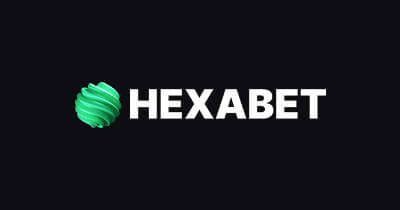Litecoin Casinos
A Player's Guide to Litecoin (LTC) CasinosLitecoin is one of the most popular altcoins at online crypto casinos. It is a well-established cryptocurrency, offering faster and cheaper transactions than Bitcoin. In this guide, we’ll tell you everything you need to know about Litecoin (LTC) - including where to find the best LTC casinos, bonuses, and how it compares to other cryptos.
Our Recommended Top Litecoin Casinos
The CryptoSpinners team has found and reviewed some excellent Litecoin casinos for you. Here are our current top picks:
Compare the Best Litecoin Casinos
Because Litecoin is one of the most popular cryptos, quite a few online casinos now accept it. This is great, but it means it can be time-consuming to find the best. Luckily, we’ve done the hard work for you, so you can easily and quickly compare what’s on offer at the different LTC casinos.
Each of our detailed, unbiased reviews gives you all the information you need to make the best choice. Find out what bonuses you can expect, what the choice of games is like, how good their player support is, and how serious they take security.
| #1 | BitStarz |
| #2 | 7Bit |
| #3 | Rocketpot.io |
| #4 | WildTornado Casino |
| #5 | Loki Casino |
Don’t Miss the Best Litecoin Casino Bonuses
Like at any online casino, the potential value of bonuses is a major factor in choosing where to play. But, bonuses come in many different forms, so let’s run through what you can expect to find at our recommended Litecoin casinos.
Enjoy Lots of Litecoin Casino Free Spins
Free Spins offers are one of the most popular types of bonuses at all online casinos, including those supporting LTC. They are usually pretty self-explanatory, awarding you a certain number of free spins, usually on a specific game selection of games. Free Spins often form part of bigger bonus packages, particularly Welcome Deals. Always make sure you check out things like wagering requirements before using a free spins bonus.
Litecoin No Deposit Bonuses? No Problem!
Out of all the types of bonus offers, no deposit deals are probably the best. Why? Because you aren’t required to spend any cash, or crypto, to qualify for them. They are totally free. Simply sign-up, opt in, and enjoy! Of course, most no deposit offers are of low value, but occasionally a casino will go wild and offer something insane – and we’ll make sure you know about it.
Rewarding Promo Codes for LTC Casinos
Everyone knows about promo codes for all kinds of things in life, from fast food to grocery shopping, but did you know you can also get them for crypto casinos? Yep, many online casinos put out promotional codes offering exclusive bonuses – and we’ll show you where to get the best ones.
What Exactly is a Litecoin Casino?
In a nutshell, a ‘Litecoin casino’ is simply any online casino that supports deposits and/or withdrawals in the LTC cryptocurrency. Most will also accept other major cryptocurrencies, like Bitcoin (BTC) and Ethereum (ETH) too, along with traditional fiat payment methods like Visa, Mastercard and bank transfer.
What is Litecoin and is it Safe?
Litecoin (LTC) is one of the oldest cryptocurrencies, having launched back in 2011 – just two years after bitcoin. It was designed to be faster and more efficient than bitcoin, hence the name ‘Litecoin.’
In many technical respects, Litecoin is very similar to bitcoin, being a truly decentralised peer-to-peer digital currency. This means it is not controlled by a central authority, like a business, regulator, or government. All transactions are immutable and verifiable on a public ledger, but no personally identifiable information is viewable, meaning users’ privacy is protected.
Are Litecoin Casinos Safe?
Litecoin is inherently one of the safest payment methods, and all crypto casinos recommended by CryptoSpinners are 100% legitimate. By using it for gaming, you are ensuring total security and privacy. However, as always, you should do your research and make sure the casino you are playing at is legit. After all, it doesn’t matter how secure the crypto is, if the casino operator is dodgy!

Types of Games Available at Litecoin Casinos
Today, Litecoin casinos offer thousands of slots, table games, and live casino games, from the best studios. Whether you’re looking for old classics or the latest releases, you’ll be able to enjoy them safely and securely using Litecoin (LTC).
Discover a World of Litecoin Slot Games
Visit our recommended Litecoin casinos to discover an entire world of slots. From old school fruit machines and all-time classics like Dear or Alive, to the latest MegaWays releases, you’ll be spoilt for choice. And, let’s not forget those huge jackpot slots that can turn you into a crypto millionaire in seconds!
Litecoin Live Casino? You Got It!
Nothing captures the authentic real-world casino vibe quite like live casino games. Now, you can experience the thrill of playing live dealer blackjack, roulette, baccarat, and poker with Litecoin! The offering from providers like Evolution, Ezugi, and NetEnt is truly next-level.
Play Classic Table Games with Litecoin
Love passing the time with a game of video poker, blackjack, roulette, or baccarat? Now you can play all your favourite table games with Litecoin. With hundreds of variations and themes to choose from, you’ll never get bored.
Everyone Loves a Litecoin Game Show!
Did you know that many Litecoin crypto casinos now offer game shows? Yes, that’s right, providers like Evolution have even spent a fortune securing licences for massive TV hits like Deal or No Deal, and iconic board games like Monopoly. If you’ve not tried them yet, what are you waiting for?
How to Use Litecoin at a Crypto Casino
Litecoin is still one of the most popular cryptocurrencies, and is readily available to purchase on most exchanges. Price wise, it is still one of the more accessible big cryptos too. If you don’t already have some, head over to an exchange like Binance, Kraken, or Coinbase to get some.
How to Deposit Litecoin at a Crypto Casino
So, you’ve got some Litecoin (LTC) in your crypto wallet and you want to deposit it at your chosen online crypto casino? Just follow our simple guide below, and you’ll be ready to play in no time.
Just follow our simple guide below, and you’ll be ready to play in no time.
- Make sure the casino you’ve chosen supports Litecoin (LTC).
- Open the wallet that contains your Litecoin (this could be the wallet provided by an exchange).
- Log-in to your chosen Litecoin casino, and navigate to the deposit section. Copy the unique casino LTC wallet address provided.
- Back in your own crypto wallet, set up a new transfer or withdrawal, to the LTC casino wallet address (paste it, but still double check it before confirming the transfer). Set the amount of LTC you want to transfer. Also include the appropriate memo or tag, if required.
- Confirm the transaction and complete any security procedures.
Your Litecoin should appear in your casino wallet within a few minutes, though there can be delays.
How to Withdraw Litecoin from a Crypto Casino
Withdrawing Litecoin from a crypto casino is very easy and quick – just follow the guide below.
- Make sure the crypto wallet you want to withdraw to supports Litecoin (LTC).
- Log in to your Litecoin casino account and select withdraw.
- Enter the unique address of the crypto wallet you want to transfer your Litecoin funds to (always copy and paste addresses, and then double-check them). Make sure to include the appropriate memo or tag, if required.
- Select the amount you wish to withdraw, and confirm the transaction.
- Complete any required security verification.
Your Litecoin should arrive in your crypto wallet within a few minutes.
Are Litecoin Withdrawals Subject to Fees?
Transactions on the Litecoin network are among the cheapest of any cryptocurrency. Typically, a transaction costs less than one US cent. Most crypto casinos will cover any fees anyway.
Troubleshooting Litecoin Issues at Casinos
Things very rarely go wrong with Litecoin transactions, but if you do hit a problem, check out the pointers below.
- I can’t deposit Litecoin at the casino
Check that the casino supports Litecoin (LTC). - I can’t withdraw my winnings.
If you’re using a bonus offer, check to make sure you’ve met any wagering requirements or other conditions.
Make sure your crypto wallet is compatible with Litecoin (LTC).
Also ensure you’ve completed any account verification required by the casino.
- I can’t find out how to deposit litecoin
Most online casinos provide information about how to deposit all the cryptos they accept. You can also refer to our earlier guide, and if that doesn’t help, contact customer service via live chat.
- I typed the wrong address
Unfortunately, all cryptocurrency transactions are irreversible once initiated. This is why it is critical to always copy, paste and double-check addresses before sending.
- I typed the wrong amount
Again, because all cryptocurrency transactions are irreversible, you can not alter things once initiated. All you can do is wait for the transfer to complete, then make another.
- I made the deposit or withdrawal a long time ago, but there is still nothing showing in my account
Try refreshing or closing and reopening your wallet/account – sometimes the transaction is complete, but just hasn’t shown yet.
Check your transaction history to see if the funds have left your exchange or casino account. If they haven’t, you might want to contact customer support to find out if the transaction was held for some reason. Sometimes security checks or technical issues can delay transactions.
Pros and Cons of Using Litecoin at a Crypto Casino
Like all payment methods, crypto and traditional, Litecoin has its strengths and weaknesses. Below, we’ll compare LTC to other popular cryptocurrencies, and traditional fiat payments.
Litecoin versus Other Cryptocurrencies
From the very outset, Litecoin (LTC) was developed to be faster and cheaper than bitcoin (BTC). Even now, over a decade later, it is still one of the most efficient cryptos, with typical transactions taking just a few minutes and costing less than a US cent.
Despite this, Litecoin still offers the security and privacy of a truly decentralised, peer-to-peer cryptocurrency, just like bitcoin. This makes it a prime choice for crypto gamers looking to enjoy online casinos without handing their sensitive financial information to third parties.
However, being a true cryptocurrency, Litecoin (LTC) does suffer from high price volatility. For example, in May 2021 its price reached over US$350, but by June 2022 it had fallen to around US$50. To mitigate this volatility, many crypto users convert part of their Litecoin balance to a stablecoin, like USD Coin, periodically.
| Features | Bitcoin | Ethereum | LiteCoin | Ripple | USDC | Stellar |
|---|---|---|---|---|---|---|
| Cheap Transaction fees | ✔ | ✖ | ✔ | ✖ | ✖ | ✖ |
| Fast deposit/withdrawal | ✔ | ✔ | ✔ | ✖ | ✖ | ✖ |
| Popular | ✔ | ✔ | ✔ | ✖ | ✖ | ✖ |
| Secure | ✔ | ✔ | ✔ | ✖ | ✖ | ✔ |
| Privacy | ✔ | ✔ | ✔ | ✖ | ✖ | ✔ |
| Volatility | ✔ | ✔ | ✔ | ✔ | ✔ | ✔ |
| Simplicity | ✔ | ✔ | ✔ | ✔ | ✔ | ✔ |

Litecoin versus Traditional Payment Methods
Litecoin (LTC) enables users to make lightning fast transactions for a fraction of the cost of traditional payment methods. The Litecoin network is peer-to-peer, and completely cuts out the middlemen of the traditional financial system, like banks and processors.
By using Litecoin at online crypto casinos, players can also avoid having to hand over sensitive personal financial information, thus maintaining a higher level of security and privacy.
As with all cryptocurrencies, transactions are irreversible once initiated. Unlike traditional payment methods, if something goes wrong (like a hacker changes a wallet address you are sending to), no bank or credit card company is there to refund you. This is why you must always double check addresses and keep your wallet keys safe.
| Features | Litecoin | Visa | Mastercard | Paypal | Bank Transfer |
|---|---|---|---|---|---|
| Cheap Transaction fees | ✔ | ✖ | ✖ | ✖ | ✖ |
| Fast deposit/withdrawal | ✔ | ✔ | ✔ | ✔ | ✖ |
| Popular | ✔ | ✔ | ✔ | ✔ | ✔ |
| Secure | ✔ | ✔ | ✔ | ✔ | ✖ |
| Privacy | ✔ | ✖ | ✖ | ✔ | ✖ |
| Volatility | ✖ | ✔ | ✔ | ✔ | ✔ |
| Simplicity | ✔ | ✔ | ✔ | ✔ | ✔ |
Conclusion
Litecoin (LTC) is an excellent choice for online gamers who want ultra fast, cheap, and secure transactions. In addition to being widely accepted, it is one of the most well established and trusted cryptos, and looks set to remain so for the foreseeable future. As with all cryptos, users should always be aware of risks and volatility, and take steps to protect themselves.










